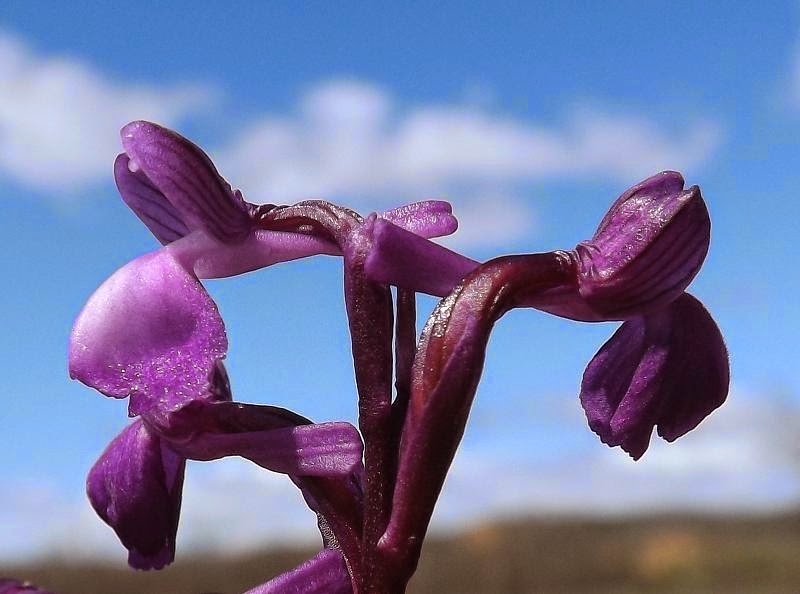Deze post in het Nederlands: klik hier.

When trying to save a hoopoe seems more important than mushroom hunting.
Introduction
Looking for some tasty St. George´s mushrooms (Calocybe gambosa or Tricholoma Georgii), a mushroom that is common in our region, we suddenly saw a black and white bird sitting in the grass. Maybe it was a magpie? No, it was a hoopoe. Without noticing we had approached the hoopoe up to at least 5 meters and it still hadn´t flown away, would it be dead? No, although the creature didn´t move a muscle, it still blinked occasionally with its eyes. This was an opportunity and quickly I walked back to the car to grab the camera. At a closer inspection its right wing showed to be in an unnatural position and when after a cautious approach the bird still didn´t get away, it was confirmed that there was something wrong with it. After picking it up very carefully we could see that the wing was damaged. What to do now? Luckily in our region we have a wildlife care-center where one of the attendants is a friend of ours. The mushrooms were immediately forgotten and we set off to the care-center which is situated in the middle of the woods. Once we got there it turned out that nobody was present, so we phoned our friend which wasn´t at home neither. Nevertheless he said we could leave the poor animal in the back of his land rover which was parked by his house. We installed the hoopoe as comfortable as possible and left it waiting for the attendant to come home. The next day we called him, but it turned out that despite the devoted care the animal had deceased.
Some Facts
As can be seen in the photos the hoopoe is a quiet exotic looking bird with black and white wings and tail and a pinkish-brown body. Another conspicuous characteristic is the pinkish crest, of which the upper part is also black and white. In the United Kingdom the hoopoe is a very rare bird, with only a very occasional breed. In spring some hoopoes may appear in the south of England when they are migrating. However, in Spain the hoopoe is rather a common bird which is resident in the south of the Iberian Peninsula. Also in our region it can be spotted frequently, although only as a summer guest (see map), especially in the more arid meseta that lies directly south of the Cantabrian Mountains. The hoopoe likes to stroll around in meadows and along paths, searching with its long beak to surprise various unlucky arthropods and sometimes lizards. Good places for spotting them are the forest edges of planted pine groves. These are planted on former agricultural lands and are therefore of a reduced size and surrounded by open fields, very much to the liking of the hoopoe. Moreover, the hoopoe is fond of the pine processionary caterpillar, a caterpillar which is quite harmful to the pines. This has caused the hoopoe to be commonly considered as a very welcome guest.
READ FURTHER AND ENJOY THE PHOTOS.





